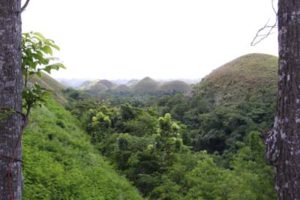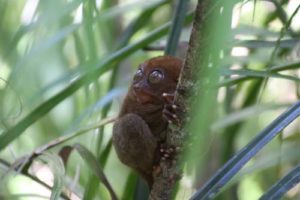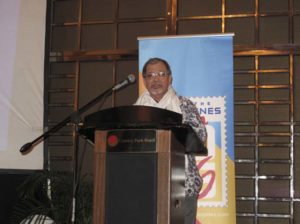Summer now and there’s a lot more to do.
I’ve read some books, a few by Joseph Campbell on mythology, some about the Tibetan yoga of death and dying and dreams. I am just about to finish a manual on how to access the Akashic Records: I had heard about the technique back in Cairo in the millennium when I was actively teaching in Egypt. And then there’s Susan Brind Marrow’s impressive “The Dawning Moon of the Mind: Unlocking The Pyramid Texts” that I read and re-read. I had been to Saqqara but I did not know the texts existed. The hieroglyphs in the Djoser step pyramid have been translated before, but this is the first version that I read. Ms Morrow has studied ancient hieroglyphs for decades, since she was a 16-year old freshman at Columbia U. She is also a poet and familiar with imagery and several languages language. There’s a lot more to study but with failing eyes, I’ve tried to avoid reading and instead watched DVDs of lectures about Buddhism and how Christ became God (on Great Teachings).
I’ve also been trying to write the blog and editing a collection of essays (my first) and poems (my second) for publication. I don’t know how important books are to people nowadays. There was a time when printed matter on paper – books and magazines – was the main medium of communication. Further back there were the tablets and steles, and bamboo and silk and papyrus. But today, there is the internet with its e-books, social network, live streaming, e-mails and ezines and of course CDs and DVDs. At the same time, we cannot escape from putting words, voice or writing, together to perpetuate our thoughts. An ancient Egyptian papyrus mentioned by Ms Morrow * said that our true heirs are the books we write: ultimately pages, not our children, carry our legacies. (I like the image of a pen as the bridge between author and paper and writing itself as the act of transmission. ) In a real sense, students are likewise the beneficiaries of our treasures, our learning and, well, wisdom: priceless lessons from the mouth of the teacher to the ears of the disciples.
 I was in the Philippines and Vietnam last February. A week with family in an island in Bohol to join my son Norman on his 50th birthday for some eco-tourism – eavesdropping on fireflies mating on a full moon in the mangrove swamp, learning about the habits of butterflies (the females don’t devour their mates after sex, said the irrepressible guide), sneaking up in the forest to take photos of the sleeping tarsiers (the smallest monkeys in the world), wandering the Chocolate Hills an hour away. Then a few days in Hanoi to see Halong Bay to fulfill my partner’s dream of seeing this natural fantasy before it gets too polluted to appreciate. On our arrival we learned that Vietnam was commemorating the 50th anniversary of the massacre at My Lai where 504 unarmed elderly men, women and children were killed (the young men were out working in the field at the time) on March 16, 1968. Pham, the tour guide, took me to the War Museum in Hanoi where, in the shadow of the wreckage of a B-52, she told me about the time when women who gave birth to disabled babies were ostracized because they were thought to have dealt with witchcraft until it was discovered that they were exposed to the herbicide Agent Orange. Pham also said that even now, there are people dying from the millions of bombs and mines dropped on the countryside during the American war. As she
I was in the Philippines and Vietnam last February. A week with family in an island in Bohol to join my son Norman on his 50th birthday for some eco-tourism – eavesdropping on fireflies mating on a full moon in the mangrove swamp, learning about the habits of butterflies (the females don’t devour their mates after sex, said the irrepressible guide), sneaking up in the forest to take photos of the sleeping tarsiers (the smallest monkeys in the world), wandering the Chocolate Hills an hour away. Then a few days in Hanoi to see Halong Bay to fulfill my partner’s dream of seeing this natural fantasy before it gets too polluted to appreciate. On our arrival we learned that Vietnam was commemorating the 50th anniversary of the massacre at My Lai where 504 unarmed elderly men, women and children were killed (the young men were out working in the field at the time) on March 16, 1968. Pham, the tour guide, took me to the War Museum in Hanoi where, in the shadow of the wreckage of a B-52, she told me about the time when women who gave birth to disabled babies were ostracized because they were thought to have dealt with witchcraft until it was discovered that they were exposed to the herbicide Agent Orange. Pham also said that even now, there are people dying from the millions of bombs and mines dropped on the countryside during the American war. As she  spoke, she tried to suppress her grief and anger — and tears — but it was difficult, even for a Buddhist like her. “Why do human beings do that to other human beings?” she asked. As we walked away from the bombs, planes and tanks in the open museum, I told her that in the Philippines, Filipinos were massacred too during the Philippine-American War. “When was that?” she asked. “In 1902,” I said, thinking of the village I visited on the island of Eastern Samar where General Smith ordered US soldiers to kill every male over 10 years old. For a long while, we were both quiet, two survivors of two different wars and two different countries.
spoke, she tried to suppress her grief and anger — and tears — but it was difficult, even for a Buddhist like her. “Why do human beings do that to other human beings?” she asked. As we walked away from the bombs, planes and tanks in the open museum, I told her that in the Philippines, Filipinos were massacred too during the Philippine-American War. “When was that?” she asked. “In 1902,” I said, thinking of the village I visited on the island of Eastern Samar where General Smith ordered US soldiers to kill every male over 10 years old. For a long while, we were both quiet, two survivors of two different wars and two different countries.
I was in the Philippines again for three weeks last May to teach seminars. One was about Classical Yang Family Tai chi chuan. My brother Florante took a few of my students to Estipona, Pura, Tarlac, a short drive north of my hometown. I am grateful to my sister-in-law Vicky for making this refuge in a farm available to me and my guests. The 1000 ylang-ylang trees were in full bloom scenting the air; a couple of people harvested the flowers between 6 and 8 in the morning for the delicious oil. The students religiously practiced by the pool early at 5 and in the course of the day even as the heat turned overwhelming. I also taught three seminars in Manila. One covered Jade Mountain CNT internal organs massage, the second INAM TaoRen Terapi (the protocol I developed for the survivors of the typhoon Haiyan/Yolanda 3 years ago) and the third Microcosmic Orbit Meditation and Xing Shen Zhuang Fa, rare Daoist transmissions in the canon. As if my schedule wasn’t crowded enough, I also met with contemporaries from my hometown and university, and looked for lost relatives in the ancestral barrio.
 I was a presenter at the International Conference of the World Blind Union, a massage convention of the Asia Pacific Region. I was told I was “the only seeing presenter” there. There were 300 delegates. I read a paper and did a demonstration of internal organs massage. The man who invited me to the convention was Victor Recorber, who with his group of blind masseurs has been studying massage with me for two years at INAM Philippines, the sponsor of my seminars for the last 2 decades I’ve taught in the Philippines. Every time I meet Victor in Manila, he would say, “Sir Rene, long time, no see.” LOL. There’s so much joy in these visually handicapped persons. I was seated beside a young woman at the conference and she was telling me that she raised money to attend. We spoke in Pilipino, the national language. “Do you have family?” I asked. “Yes,” she said, “I have a child.” “Where is the father?” She said, “I don’t know.” “Will you recognize him?” She said, “Only if grope him.” Laughter. “Grope” isn’t the word she used, but it is probably the best translation of the Tagalog “Kapa-in.” I invited her to attend my CNT seminar but she had to fly back to the islands.
I was a presenter at the International Conference of the World Blind Union, a massage convention of the Asia Pacific Region. I was told I was “the only seeing presenter” there. There were 300 delegates. I read a paper and did a demonstration of internal organs massage. The man who invited me to the convention was Victor Recorber, who with his group of blind masseurs has been studying massage with me for two years at INAM Philippines, the sponsor of my seminars for the last 2 decades I’ve taught in the Philippines. Every time I meet Victor in Manila, he would say, “Sir Rene, long time, no see.” LOL. There’s so much joy in these visually handicapped persons. I was seated beside a young woman at the conference and she was telling me that she raised money to attend. We spoke in Pilipino, the national language. “Do you have family?” I asked. “Yes,” she said, “I have a child.” “Where is the father?” She said, “I don’t know.” “Will you recognize him?” She said, “Only if grope him.” Laughter. “Grope” isn’t the word she used, but it is probably the best translation of the Tagalog “Kapa-in.” I invited her to attend my CNT seminar but she had to fly back to the islands.
Somebody in the gym informed me that there’s this Filipino, Arnel Pineda, who was the lead singer for the band Journey. I heard about him 8 years ago but I was not paying attention; besides, ignorant of much of pop culture, I did not know about this band or about the singer. This time around I googled him. It turned up quite a few items – how he was discovered on youtube singing in a small venue in Manila and was asked come to the US to audition in California. There were also a number of live performances showing concerts in Chile, Japan, Spain, and interviews with Ophrah and Ellen. Quite a triumphant reception for anyone indeed, and a moving and inspiring life story in any field. I ordered Journey’s the Revelation and Live in Manila albums from Amazon. That’s another piece of “research” I have to include during the summertime. Oh, yes, there’s likewise some rituals I have started to learn and observe at the feet of Lord Shiva/Nataraja in my study downstairs – thanks to my Indian friend Guru Bose for lessons in the sacred puja and darshan. I acquired the 7-foot statue last May after paying the owner of Two Buttons several installments.
All the best, always,
Rene
*There’s an anonymous poem she mentions that I think I should also share here. She does not say where she got it, or whether it came from the pyramid texts.
Death is before me today
Like the smell of myrrh
Like sitting under sails in the wind
Death is before me today
Like the smell of lilies
Like sitting on the shore
Of a drunken land
Death is before me today